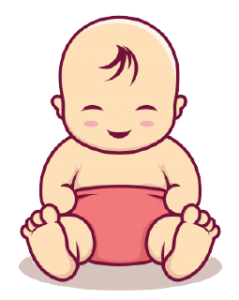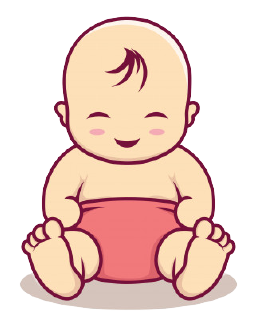Teething is an uncomfortable experience for a baby but, it is one of the major developmental milestones in a baby’s life. The first tooth of a baby is a battle for both the baby and the parents. It will make your baby fussy and clingy, and fever might also pay a visit. After all, this hard work, what if the new tooth/teeth appear to be crooked?
Crooked teeth are common among babies, and they are not a reason to worry most of the time. The purpose of the milk teeth is to guide the permanent teeth by acting as placeholders till they erupt. Having slightly milk crooked teeth does not essentially lead to have crooked permanent teeth or cause any other dental problems.
But if the misalignment in the milk teeth is intensive, it can impact the development of the permanent teeth and cause other complications which require medical attention. Keep reading to know what causes crooked teeth, when to be concerned and how to treat the crooked teeth of your baby.
CONTENT
1. Why do my baby’s teeth come in crooked?
2. What are the problems associated with crooked teeth?
3. How to treat the crooked teeth of a baby?
1. Why do my baby’s teeth come in crooked?
Genetics
Genetics is on the top of the reasons why babies get crooked teeth. If the father and the mother of the child had crooked milk teeth as babies, their little one is more likely to have crooked milk teeth. This can be caused by other reasons like small-sized jaws or misaligned jaws.
The babies who will have small or misaligned jaws like their parents will face problems of teeth overcrowding or teeth misalignments as their parents did.
Pacifiers or thumb sucking
Pacifiers and thumb sucking are healthy and safe self-soothing techniques that help calm down on their own. But once the baby’s teeth try to come out, the habit of sucking a pacifier or a thumb can affect adversely the teeth of your baby.
If your baby sucks the thumb or the pacifier excessively, the front tooth might push itself open causing an open bit. This habit can also change the shape of the mouth roof that can be a reason for teeth misalignments and crooked permanent teeth. There is no problem allowing your baby to have a pacifier but, it is better to slowly start weaning them off the pacifier as the milk teeth erupt.
Tooth decay
When the newly erupted milk teeth started to decay they may look crooked. As the purpose of milk teeth is to guide the permanent teeth, decay of them can cause problems in permanent teeth.
Injuries
The parts of milk teeth can be broken due to accidents. This can be a subtle incident that you did not expect to damage teeth but it will make your baby’s teeth look crooked by breaking or falling out.
2. What are the problems associated with crooked teeth?
Gum diseases and tooth decay
When a tooth is oddly shaped, it becomes hard to clear that. You will not be cleaning your teeth properly even if you are brushing your teeth regularly. Then bacteria will accumulate around these crooked teeth causing decay and infections.
Misaligned and crooked permanent teeth
Milk teeth hold the space for permanent teeth that appear at later ages. If these placeholders are misshaped or misaligned, the permanent teeth may get overcrowded or erupt with unnecessary spaces.
Difficulties in speaking
Our teeth help us to pronounce the words properly. When these teeth are crooked, they can create speech difficulties for your baby.
Chewing difficulties
When the teeth of a baby are not aligned properly, they will experience problems of chewing food. When the food is not chewed well, it will cause bloating and other digestive difficulties.
Damages to teeth
When teeth are developed in odd shapes or placed wrongly, they will wear and tear the other teeth around them. It will lead to other symptoms like headaches, discomforts, and strains of the jaw that are hard to be diagnosed in a kid.

3. How to treat the crooked teeth of a baby?
If you think that the baby’s crooked teeth are bothering his dental and overall health, consult a dentist who is specialized in orthodontics. Orthodontics is the process of correcting structural problems using techniques such as braces and aligners. But it is less likely for braces to be provided as a solution for crooked milk teeth as they will fall out soon.
But early interceptive orthodontics can help to correct the structural issues that might arise as the permanent teeth start to erupt. Early treatment also has the ability to prevent the need for ongoing orthodontics.


